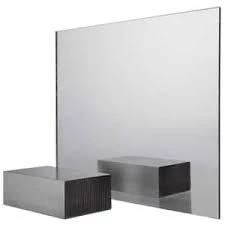

Float Glass for Fusing An Overview
Float glass, known for its exceptional quality and clarity, is created through a unique manufacturing process that involves floating molten glass on top of molten tin. This method results in a glass sheet that is smooth, uniform in thickness, and free from distortions. While float glass is commonly used for windows and mirrors, it also serves as a foundational material for various artistic and functional glass fusing applications.
Understanding Glass Fusing
Glass fusing is a technique that involves combining two or more pieces of glass by heating them in a kiln until they soften and fuse together. This process allows for the creation of intricate designs, textures, and colors, resulting in stunning decorative items, functional ware, and artistic pieces. Fusing can involve layering different colors or types of glass, and often incorporates techniques such as slumping, where the fused glass is melted into a mold to create a three-dimensional shape.
Why Choose Float Glass for Fusing?
Float glass is an excellent choice for fusing due to its uniformity and clarity. Its smooth surface and consistent thickness result in clean edges, making it easier to work with and reducing the risk of defects during the fusing process. Moreover, float glass is available in various thicknesses and sizes, allowing artists and creators to experiment with different styles and dimensions.
One of the significant advantages of using float glass for fusing projects is its compatibility with other glass types, such as colored glass, opalescent glass, and dichroic glass. This flexibility enables artists to incorporate a wide range of materials into their work, enhancing creativity and allowing for unique artistic expressions.

Techniques and Applications
Crafting with float glass requires skill and precision. Artists often begin by cutting the float glass into desired shapes using glass cutters or saws. The pieces are then cleaned to remove any dust or oils that may interfere with the fusing process. Once prepared, the glass pieces can be layered to create intricate designs, or they can be fused with additional materials such as metal or ceramic for mixed media works.
After arranging the glass, it is placed in a kiln and heated at controlled temperatures. The firing schedule typically involves a slow ramp-up to prevent thermal shock and cracks, reaching a temperature where the glass softens (around 1,400°F or 760°C), then it cools down gradually. This controlled heating and cooling process is crucial for successful fusing, as it helps maintain the glass's clarity and strength.
The artistic possibilities with fused float glass are extensive. Common applications include glass art panels, decorative tiles, jewelry, and functional items such as bowls and plates. The resulting pieces are often vibrant in color, with layers of glass offering depth and complexity.
The Future of Float Glass in Artistic Endeavors
As the popularity of glass fusing continues to grow within the art community, the demand for high-quality float glass remains steadfast. Innovations in glass production and fusing techniques are enhancing the possibilities for artists, allowing for bold experimentation and new artistic styles. Additionally, the focus on sustainability in art supplies means that manufacturers are exploring eco-friendly options for float glass production, appealing to environmentally-conscious creators.
In conclusion, float glass for fusing serves as a versatile and essential material for artists looking to create visually stunning and functional glass pieces. Its unique properties combined with the limitless creative potential in the fusing process make it a popular choice for both amateur and professional glass artists alike. As techniques evolve and new materials become available, the world of float glass fusing will undoubtedly continue to expand, inspiring creativity and innovation in glass art.